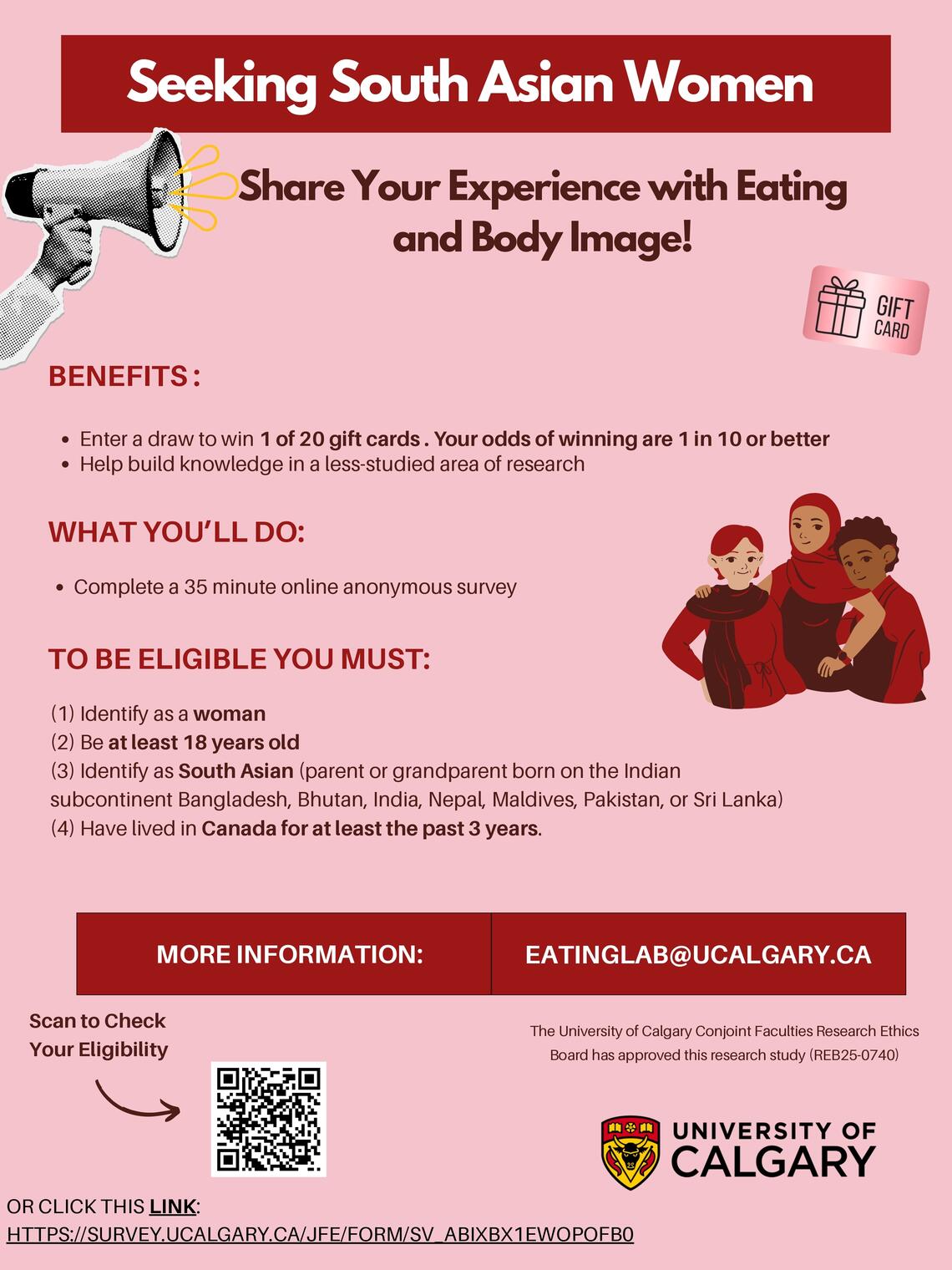The Eating Behaviours Lab is focused on reducing the burden of eating pathology on individuals and society. Learn about the ongoing studies led by the lab listed below.
Toward an Understanding of Body Dissatisfaction and Eating Pathology in Canadian South Asian Women
- This doctoral dissertation aims to broaden the understanding of eating pathology and body image in Canadian South Asian women.
- We are currently recruiting South Asian women to participate in an online survey.
- We are currently in the data collection phase of the project.
Farstad, S.M., Bajaj, D., & von Ranson, K.M. (2025). Emotion regulation facets prospectively distinguish food addiction from substance misuse in women with binge eating, gambling, or both behaviours. Appetite, 216, https://doi.org/10.1016/j.appet.2025.108266

Emotion Regulation, Binge Eating, and Gambling in Community Men.
- This project is funded by an Alberta Gambling Research Institute Major Grant and Doctoral Scholarship. This project is investigating emotion regulation predictors over time in community men who binge eat or gamble.
- We are currently recruiting adult males who engage in binge eating, gambling, or both behaviors.
- We are currently in the data collection phase of the project.
Binge Eating, Personality, and Weight Bias in Men
- This Ph.D. dissertation research looks at differences in eating pathology, personality, and mental health outcomes between men with and without eating disorders. This research also aims to better understand factors that impact binge eating over time, including impulsivity and perfectionism.
Not recruiting - currently in data analysis phase.
Academy for Eating Disorders Project:
- In partnership with the Academy for Eating Disorders (AED) and its global partners and chapters, Dr. von Ranson and the Eating Behaviours Lab are conducting a survey titled the ‘AED Global Survey of Eating Disorders Clinicians and Training’. The goal of the survey is to learn about the education, training, and level of specialization of professionals who provide clinical services, conduct research, or both with people with eating disorders. The findings of the AED Global Survey will be presented at the 2026 International Conference on Eating Disorders (ICED).
